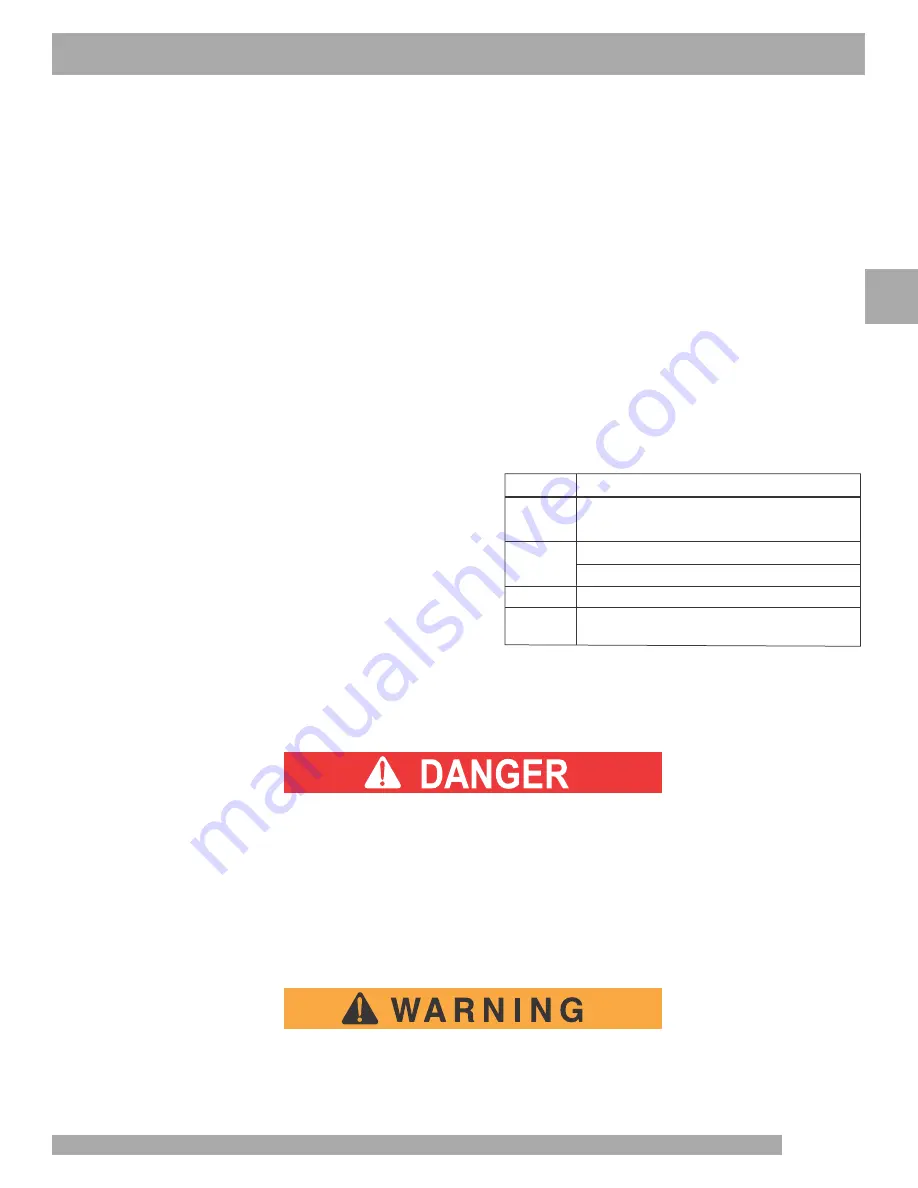
4 - 3
OPERATING PROCEDURES
Read all of this manual to become thoroughly familiar with this vehicle. Pay particular attention to all Notices, Cautions, Warnings, and Dangers.
4
This vehicle is not a toy and using it while engaging in horseplay is dangerous.
Plan carefully before using the vehicle to go significant distances over questionable terrain.
Remember that a one hour drive may take many hours to walk out should you run out of battery
power or be stranded by becoming stuck on unsuitable terrain.
Hydrogen gas is generated as a natural part of the lead acid battery charging process. A 4%
concentration of hydrogen gas is explosive and could cause severe injury or death. Charging
must take place in an area that is adequately ventilated (minimum of 5 air exchanges per hour).
To reduce the chance of battery explosion that could result in severe injury or death, never
smoke around or charge batteries in an area that has open flame or electrical equipment that
could cause an electrical arc.
Hydrogen gas is generated in the charging cycle of batteries and is explosive in concentrations as low as 4%. Because
hydrogen gas is lighter than air, it will collect in the ceiling of buildings necessitating proper ventilation. Five air
exchanges per hour is considered the minimum requirement.
Never charge a vehicle in an area that is subject to flame or spark. Pay particular attention to natural gas or propane
gas water heaters and furnaces.
Before a new vehicle is put into operation, the items shown
in the
INITIAL SERVICE CHART
must be performed.
The vehicle batteries must be fully charged before initial
use.
Check for leaks that could have developed in shipment from
the factory.
Check for correct tire inflation. See GENERAL SPECIFICA-
TIONS.
Determine and record the braking distance required to stop
the vehicle for future brake performance tests.
Remove the protective clear plastic from the seat bottom
and back rest before placing the vehicle in service
Intial Service Chart
PORTABLE CHARGER INSTALLATION
Risk of electric shock. Connect charger power cord to an outlet that has been properly
installed and grounded in accordance with all local codes and ordinances. A grounded
outlet is required to reduce risk of electric shock – do not use ground adapters or modify
plug. Do not touch uninsulated portion of output connector or uninsulated battery termi-
nal.
Disconnect the DC supply before making or breaking the connections to the battery while
charging. Do not open or disassemble charger. Do not operate charger if the AC supply
cord is damaged or if the charger has received a sharp blow, been dropped, or otherwise
damaged in any way – refer all repair work to qualified personnel. Not for use by children.
Use charger ONLY on 48 volt battery systems. Other usage may cause personal injury and dam-
age. Lead acid batteries may generate explosive hydrogen gas during normal operation. Keep
sparks, flames, and smoking materials away from batteries. Provide adequate ventilation during
ITEM SERVICE
OPERATION
Batteries Charge
batteries
Seats
Remove protective plastic covering
Brakes
Check operation
Establish acceptable stopping distance
Tires
Check air pressure (see SPECIFICATIONS)
Portable Remove from vehicle and properly mount
Charger
Summary of Contents for Terrain 250 - Electric
Page 1: ...622018 Owner s Guide ISSUED JULY 2011 REVISED JUNE 2012...
Page 77: ......
















































